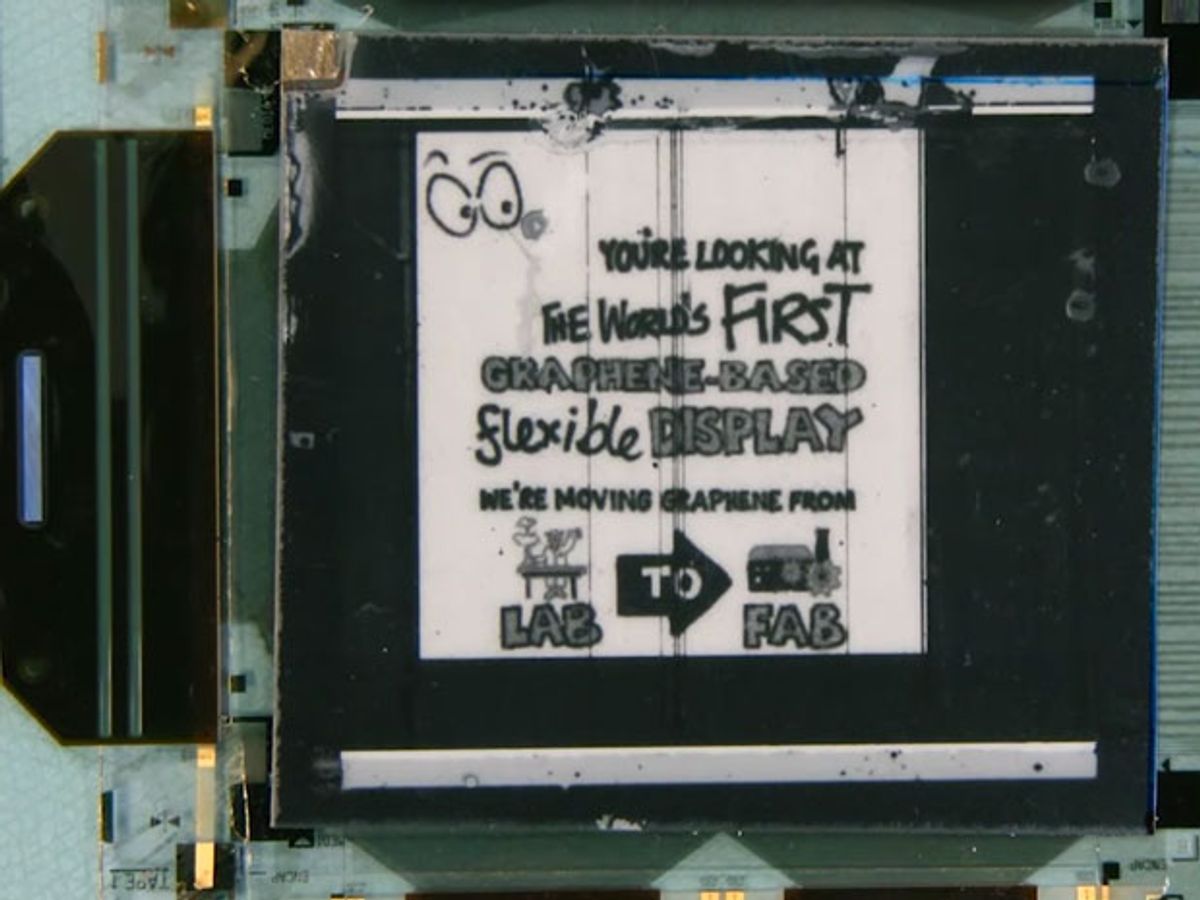In the UK’s concerted efforts to become a hub for graphene commercialization, one of the key partnerships between academic research and industry has been the one between the Cambridge Graphene Centre located at the University of Cambridge and a number of companies, including Nokia, Dyson, BaE systems, Philips and Plastic Logic. The last on this list, Plastic Logic, was spun out originally from the University of Cambridge in 2000. However, since its beginnings it has required a $200 million investment from RusNano to keep itself afloat back in 2011 for a time called Mountain View, California, home.
Nonetheless, it seems the connections to the old alma mater are still strong. Plastic Logic has developed in partnership with the Cambridge Graphene Centre for what it claims is the first graphene-based flexible display ever produced.
Research around the world has been looking at different avenues for applying graphene to flexible displays, where it offers a potential alternative to the relatively scarce indium tin oxide (ITO), which is used as a transparent conductor to control display pixels.
In this latest work, the pixel electronics, or backplane, employs an electrode made from solution-processed graphene. Here, the graphene-based electrode replaces a sputtered metal electrode layer that Plastic Logic uses in its conventional devices.
The video below provides a recipe of sorts of how the graphene backplane is produced:
The prototype uses an electrophoretic film, which is similar to the screens used in today’s e-readers with the added benefit of being flexible. In future iterations of the device, the research team will look at using liquid crystal (LCD) and organic light emitting diodes (OLED) technology to produce color images.
It would seem based on the press release accompanying the research that the collaborative arrangement between Cambridge and Plastic Logic is just as important as the technology they produced. In the press release, Professor Andrea Ferrari, Director of the Cambridge Graphene Centre said:
We are happy to see our collaboration with Plastic Logic resulting in the first graphene-based electrophoretic display exploiting graphene in its pixels’ electronics. This is a significant step forward to enable fully wearable and flexible devices. This cements the Cambridge graphene-technology cluster and shows how an effective academic-industrial partnership is key to help move graphene from the lab to the factory floor.
Indro Mukerjee, the CEO of Plastic Logic, piled on with:
The potential of graphene is well-known, but industrial process engineering is now required to transition graphene from laboratories to industry. This demonstration puts Plastic Logic at the forefront of this development, which will soon enable a new generation of ultra-flexible and even foldable electronics
Editor's Note: Plastic Logic did have its head office in Mountain View for a period, but it has always been headquartered in Cambridge, UK. The Mountain View office was closed back in late 2011.
Dexter Johnson is a contributing editor at IEEE Spectrum, with a focus on nanotechnology.



